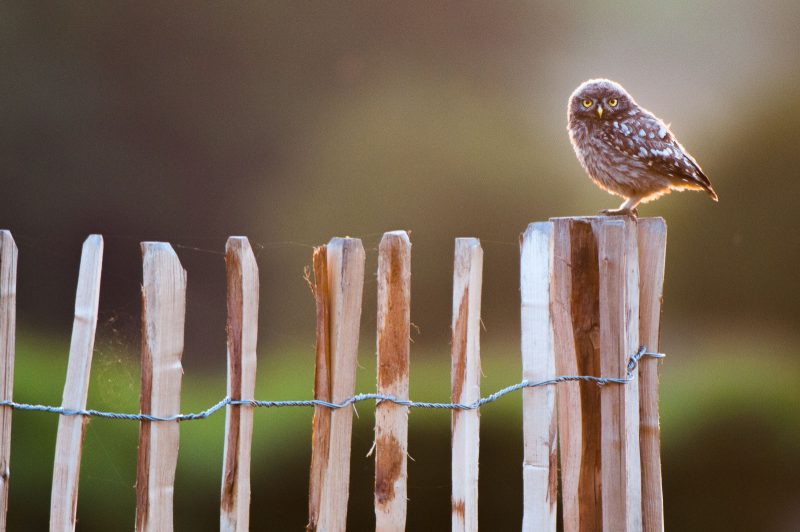How to Photograph Wildlife in Nature Reserves

Publicly accessible wild land can be difficult to come by in Britain, especially in and around cities. Having spent much of my life in London, my choice of a “local patch” was either a nearby 15×15 metre concrete pond, or an urban nature reserve. But this is certainly not a complaint; having WWT London and Richmond Park on my doorstep was a blessing. I’ve since travelled to many of the best nature reserves all over England and Scotland, and have found many perks to photographing wildlife there.
A nature reserve’s sole purpose is to provide a sanctuary for wildlife; they are therefore reliable places to see some great species. Indeed, with a little online research, you can sometimes find out exactly what is present from relevant wildlife sightings reports. Wildlife is often tamer than elsewhere too, as animals have grown accustomed to visitors around the paths. Over the last few years, I’ve picked up some tricks on how to make the most out of these fantastic places.



Preparing for your shoot
Start by checking the websites of The RSPB, WWT, The Wildlife Trusts and The National Nature Reserves. Some have very good resources: the RSPB even has a section full of fact-files for different bird species, showing each of their reserves where a particular bird can be seen.
Beware! Some reserves may be incredible for wildlife watching, but awful for wildlife photography. Whilst an impressive array of species might be found there, sometimes they are only visible from telescopes in a static hide. Don’t be drawn to a reserve purely from its species list. Instead, search the name of the nature reserve on Flickr, and you’ll quickly see the kind of results you might get. It’s relatively easy to deduce your likelihood of close encounters with wildlife in this way. Also, make a note of when these photos were taken so that you go at the right time of year.
Choose the right time to go
When you have your target reserve chosen, choose wisely when you decide to show up. Quiet days are, of course, the best. I highly recommend attending “after hours” events, avoiding weekends, and going on wet days (hides are there for a reason!).
Expand your borders
Often I also go onto Google Earth to scan the area surrounding the nature reserve. Sometimes it looks promising and can almost be as good as the nature reserve itself for wildlife. For example, I’ve discovered some extremely productive areas on the roads around reserves on the north Kent marshes, where I use my car as a hide. This provides a lovely evening of wildlife watching after a long day at a reserve.

Exploring the reserve
There are two techniques to nature reserve photography, and both have their advantages. You can explore the reserve on foot (my favourite) or set up shop in a hide. The former provides the photographic freedom and greater chance of super-close proximity encounters that I enjoy so much.
Whatever the reserve, my top tip is to ensure that you’re the first person to arrive (whether that be precisely at opening time or just before dawn). You’ll then be the first person to encounter the reserve’s wildlife before the crowds scare things away. I strictly employ this tactic at the WWT London Wetland Centre and, by walking quietly, I am often rewarded by views of water voles alongside empty paths that would later be heaving with visitors.

But, other visitors also bring their perks. Whilst many of us escape to nature reserves to avoid people, speaking to other visitors and reserve wardens can give you some pointers on where wildlife is on any given day.
As the day gets busier with other people, find those hidden corners of the reserve where you can go about finding more undisturbed wildlife and track it just as you would do elsewhere. I make the most of this creative freedom by experimenting with angles, often by lying down, using a variety of lenses, and usually shooting handheld.
As I wander around a reserve, I always anticipate some fast-moving action that I have no time to prepare for – usually a bird flying straight past me. For this reason, I constantly keep my telephoto lens attached to my camera. I use a wide aperture and ISO 800 (with aperture priority mode) to generate a fast shutter speed, and exposure compensation at +0.3 EV to bring back a bit of detail in the shadows with a presumed sky background.
Using the public hides
I find public hides quite restrictive, with your choice of position and angle being dictated to you by window positioning. Usually, I only quickly visit a hide and have a look to see if anything’s within shooting distance already, before carrying on my walk around the reserve. However, there are exceptions to this. If I’m focusing on my birdwatching, I can spend hours in a hide as they are the best place to spot rarer species (which are usually out of a camera’s reach). But it should be noted that it is some of these uncommon species, such as bitterns, that can only be photographed using hides.
Shooting from hides requires longer lenses, and even teleconverters, to compensate for the likelihood of greater distance between you and your subject. If you’re going for a longer session, another preferable piece of equipment is a beanbag. Resting your lens on one of these on the hide’s window ledge reduces vibrations (giving you a sharper image) and is a painless solution to keeping your camera poised for action all day.
Don’t think that because you are in a hide, that you are suddenly invisible. Wildlife can sometimes notice fast movement (such as twitching lenses) near the hide windows and will hear loud, sudden sounds. Avoiding this behaviour seems like common sense, but you’d be surprised how often photographers ignore it.
Have you taken any photos in nature reserves? Show us in the comments!






